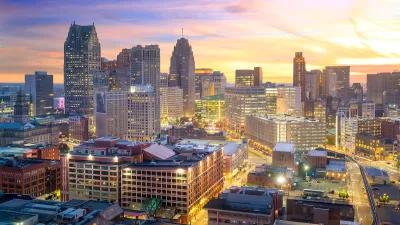The in-migration of Millennials is largely driving the changes that American cities are going through. More specifically, it is the ones with college degrees who are driving the change. Where are they moving, and what is their effect?

As both Joe Cortright of the City Observatory and I have written, Millennials—people who have reached adulthood since the beginning of the millennium—and their in-migration, are largely driving the changes that American cities are going through. More specifically, it is the ones with college degrees who are driving the change. That leaves a lot of questions, though, both about what’s currently going on and what’s likely to happen in the future. Two particular questions come to mind: first, where are they moving to, and how does that affect those places? And second, is this trend likely to turn into a tidal wave in the future, or ebb?
In attempting to answer the first question, I’m deliberately going to look not at the handful of "hot" cities, like San Francisco and Washington DC, but at the in-between cities, the ones that are also changing, but in more gradual and uncertain fashion.
I don’t have much in the way of computer skills, so I was recently delighted to learn that PolicyMap has created a feature they call 3-Layer Mapping, with which people like me can create multi-factor maps. I decided to see what different cities would look like if I put two factors together to pin down those areas where 50 percent or more of the adults 25 or older have a BA or higher degree, and where 25 percent or more of the population is age 25 to 34. To put that in context, nationally 29 percent of adults have a BA or higher degree, and 13 percent of the population is age 25 to 34. So these are areas that are close to double the national average on both indicators; in other words, concentrations or critical masses of educated Millennials. I then created maps for two periods—one for the year 2000, and the other for 2014—to see what was happening.
FULL STORY: Millennials, Revisited

Maui's Vacation Rental Debate Turns Ugly
Verbal attacks, misinformation campaigns and fistfights plague a high-stakes debate to convert thousands of vacation rentals into long-term housing.

Planetizen Federal Action Tracker
A weekly monitor of how Trump’s orders and actions are impacting planners and planning in America.

In Urban Planning, AI Prompting Could be the New Design Thinking
Creativity has long been key to great urban design. What if we see AI as our new creative partner?

King County Supportive Housing Program Offers Hope for Unhoused Residents
The county is taking a ‘Housing First’ approach that prioritizes getting people into housing, then offering wraparound supportive services.

Researchers Use AI to Get Clearer Picture of US Housing
Analysts are using artificial intelligence to supercharge their research by allowing them to comb through data faster. Though these AI tools can be error prone, they save time and housing researchers are optimistic about the future.

Making Shared Micromobility More Inclusive
Cities and shared mobility system operators can do more to include people with disabilities in planning and operations, per a new report.
Urban Design for Planners 1: Software Tools
This six-course series explores essential urban design concepts using open source software and equips planners with the tools they need to participate fully in the urban design process.
Planning for Universal Design
Learn the tools for implementing Universal Design in planning regulations.
planning NEXT
Appalachian Highlands Housing Partners
Mpact (founded as Rail~Volution)
City of Camden Redevelopment Agency
City of Astoria
City of Portland
City of Laramie





























